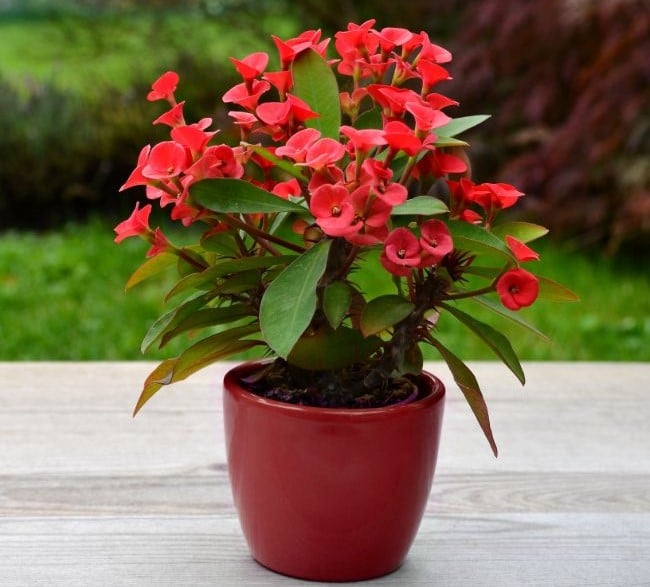
Crown Of Thorns Plant Care (Euphorbia Milii) Smart Garden Guide (2022)
Planting & Growing How to grow, prune and propagate euphorbia How to grow, prune and propagate euphorbia Incredibly tough and dry-tolerant, this group of shrubs and perennials looks like it belongs with the succulents. Showy flowers in spring and summer are a highlight, but its coloured foliage means euphorbia is visually interesting year-round.

Euphorbia milii crown of thorns red Euphorbia milii, Euphorbia, Euphorbia plant
Euphorbia milii Common Name (s): Christ Plant Christ Thorn Crown of Thorns Crown-of-thorns Phonetic Spelling yoo-FOR-bee-ah MIL-ee-eye This plant has low severity poison characteristics. See below Description Crown of Thorns is a deciduous, herbaceous, perennial shrub with bright green leaves and greenish flowers.
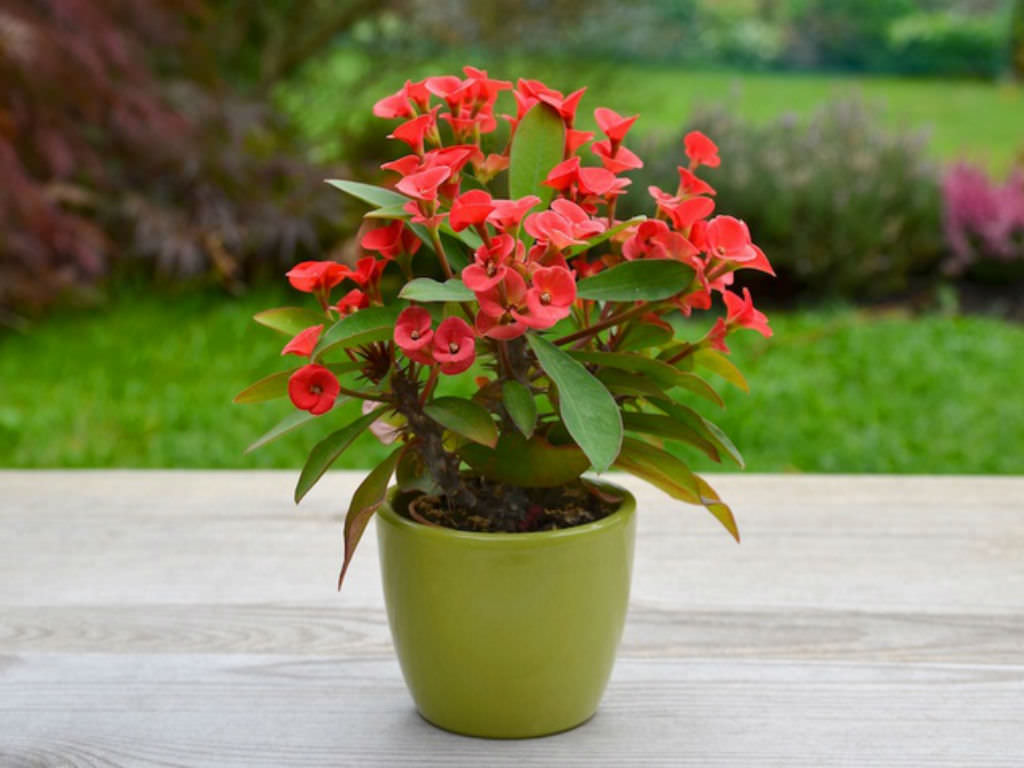
Euphorbia milii (Crown of Thorns) World of Succulents
Euphorbia milii is a slow grower. It reaches 3 feet tall (0.9m) and 2 feet wide (0.6m). When living in outdoor settings, they stretch out a little more, sometimes even a staggering 6 feet in height. The reason for this slower growth is largely due to their large flowers.

How to grow and care Euphorbia Mili flower plant YouTube
The Crown of Thorns is a euphorbia species often grown as an easy-care plant. How do you pronounce Euphorbia milii correctly?Say: yew-FOR-Bee-ah MIL-ee-eye. It has several outstanding qualities, such as being impervious to most pests and insects and like many succulent plants, it can deal with sporadic watering and some poor care.

Euphorbia Milii Vulcanus Name Crown Of Thorns) 150mm Pot Dawsons Garden World
Euphorbia milii grow and care - succulent shrub or climber of the genus Euphorbia also known as Euphorbia mili or Christ plant, Euphorbia milii perennial evergreen used as ornamental plant also can use as bonsai, can grow in tropical mediterranean, subtropics or desert climate and growing in hardiness zone 9+.. Leaves color green some cultivars can be white in the edge, the leaves in.
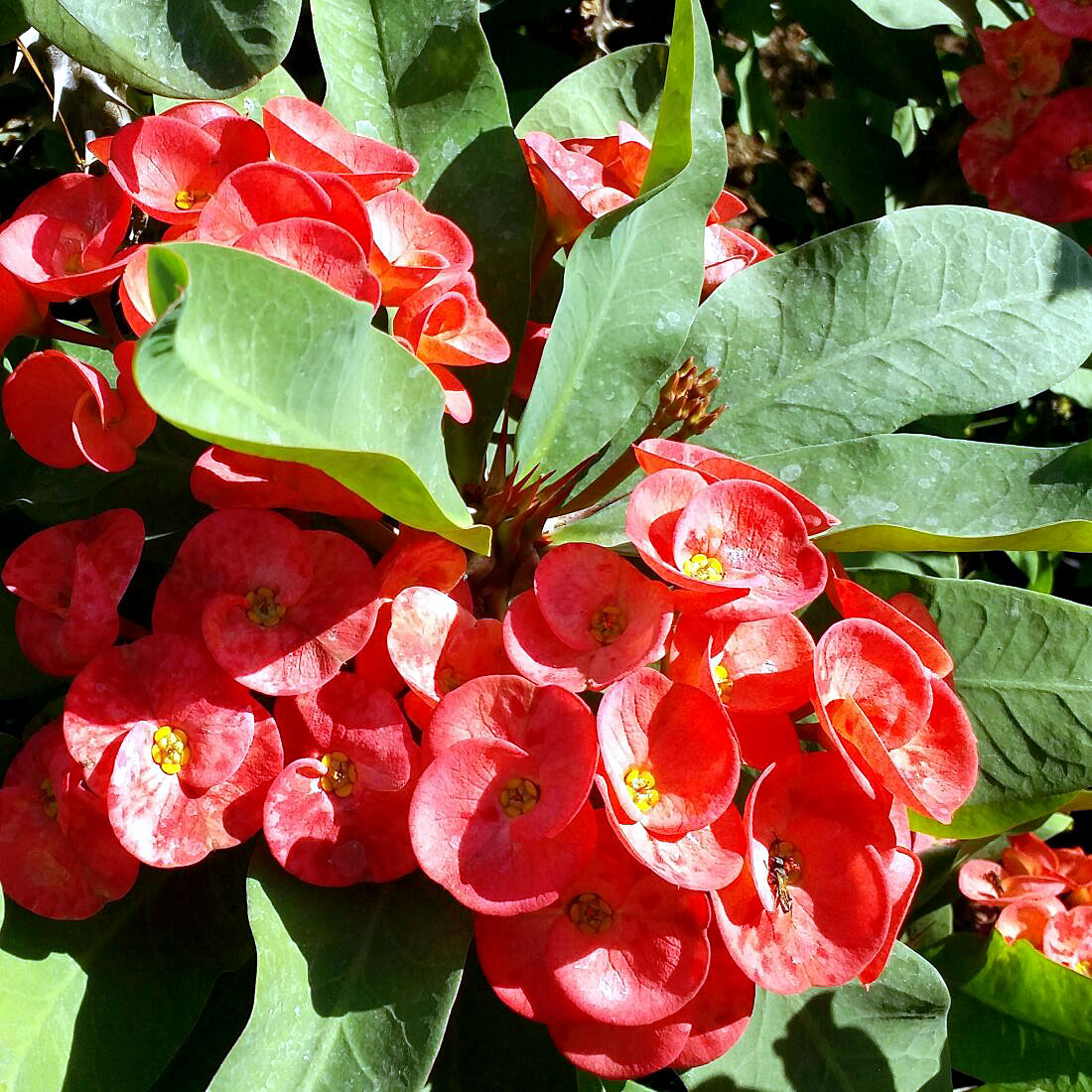
Euphorbia milii How to grow and care Crown of Thorns plant NatureBring
Euphorbia Milii, also known as Crown of thorns, Christ plant, or Christ thorn, is a strongly branched succulent plant that is a perennial shrub Trichodermaceae family. In the wild, it can be found in the arid regions of Mexico and Madagascar. In European countries, it is cultivated indoors.
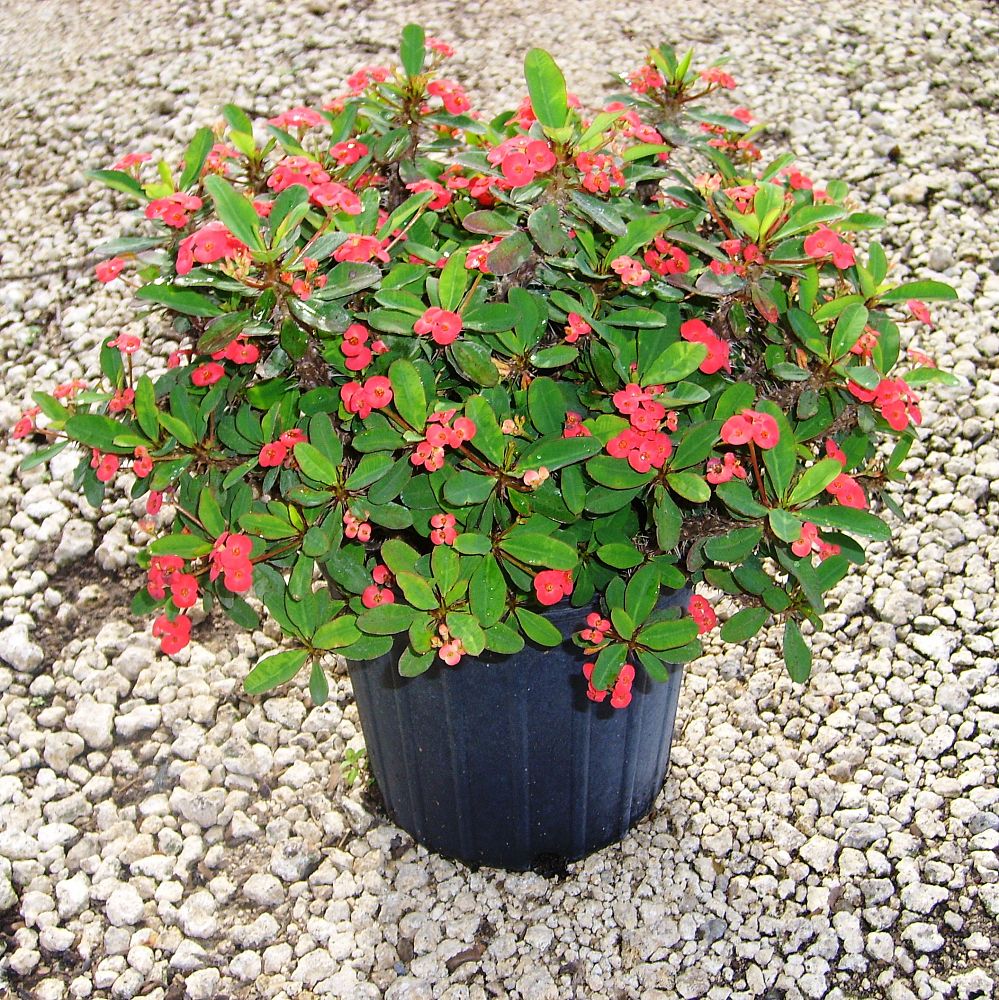
Euphorbia milii, Crown of Thorns PlantVine
The ever-blooming Crown of Thorns (Euphorbia milii) is one of the oldest houseplants. It's easy to care for—with a few caveats—and comes with many variations to keep your home in cheerful multicolor year-round. How do you care for a Crown of Thorns Plant?
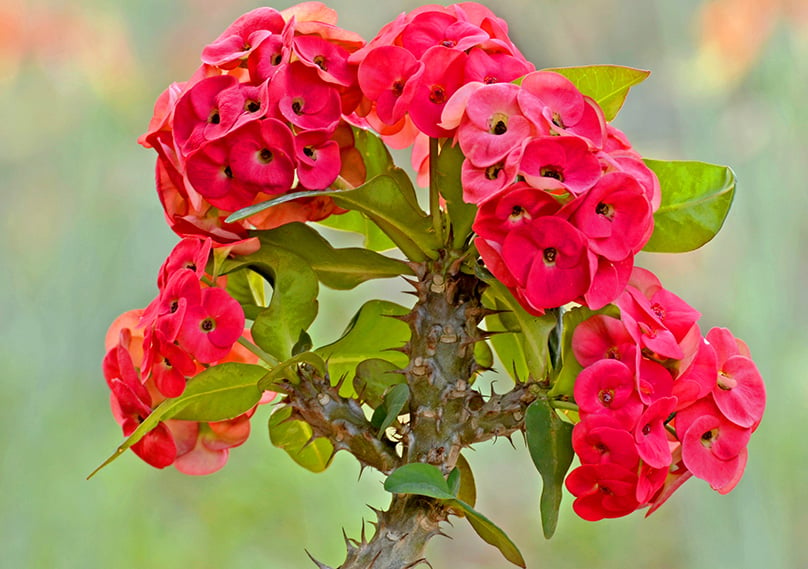
Euphorbia Milii Guide How to Grow & Care for “Crown of Thorns” Plant
Euphorbia milii - The Crown of Thorns Plant With lots of colorful varieties Euphorbia milii commonly called the Crown of Thorns Plant. They are a long flowering plant and easy to grow in a warm climate. Many hybrids have been produced in Thailand and it is regarded as a 'Lucky Plant' by the Chinese.

Euphorbia Milii Milii Pandora name Crown of Thorns) 150mm Pot Dawsons Garden World
Euphorbia Milli is an ornamental cactus-like plant native to Madagascar and other tropical regions throughout the world. The plant was first introduced into cultivation by Baron Milius, a Governer of Réunion (Bourbon Island), hence the name Milii.

Crown of Thorns (Euphorbia milii) Life is a Garden
The Euphorbia milii succulent plant is grown for its distinctive spikes, which can grow up to 16 inches tall and have a thorny exterior. This Euphorbia is a flowering plant that has a unique and beautiful appearance best characterized by tiny flowers that grow in clusters and are subtended by spectacular red or yellow bracts.
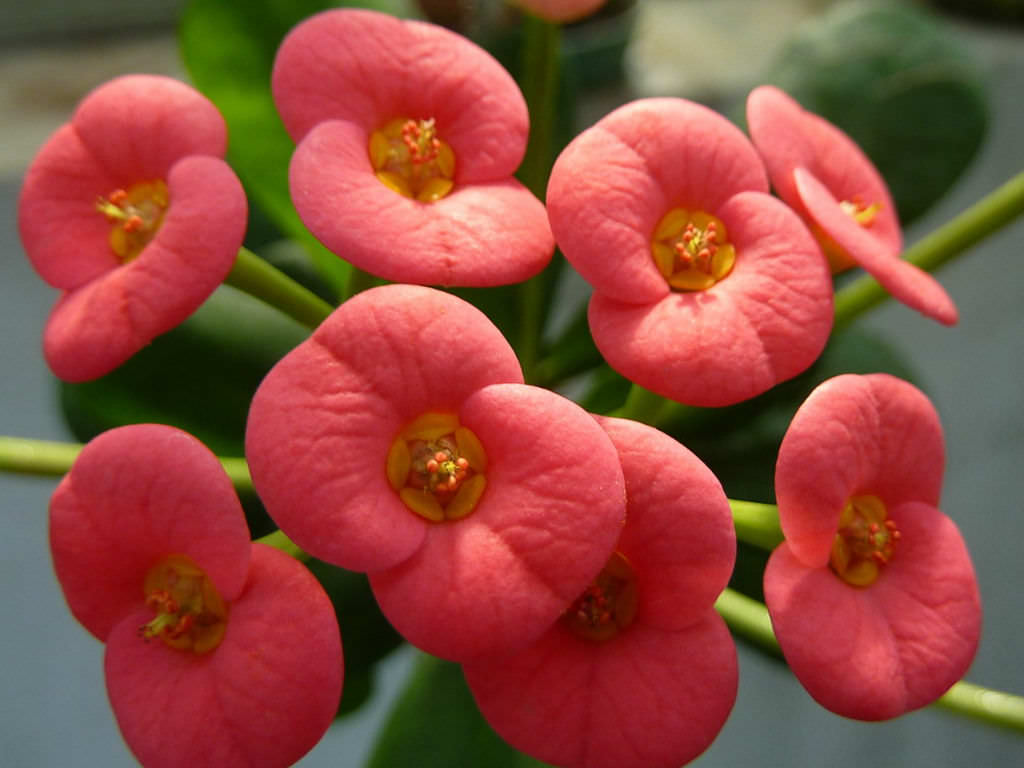
Euphorbia milii (Crown of Thorns) World of Succulents
One of the most common Euphorbias is known as Crown of Thorns or Euphorbia milii. These plants are native to Madagascar and, as the name implies, are covered in thorns. Crown of Thorns usually flowers on the new growth, which means you get a mass of flowers through spring, into summer and autumn, and even through winter.

Euphorbia milii red Euphorbia milii, Plants, Crown of thorns plant
Euphorbia milii, commonly called crown of thorns, is a woody, succulent shrub that features (a) fleshy, bright green leaves, (b) inconspicuous flowers in clusters subtended by very showy petal-like red or yellow bracts and (c) thick sharp black thorns (to 1/2" long) which cover its water-storing branches and stems.

Euphorbia milii Crown of Thorns, Christ Plant World of Succulents
Crown of Thorns, Euphorbia milii is a succulent plant growing 5 to 6 feet tall. The woody stems are greyish brown, branched and with many prominent grey spines. The thick fleshy leaves are arranged in spiral and they are bright green to greyish green, oval shaped with a smooth edge. The inflorescence is composed of a specialized structure.
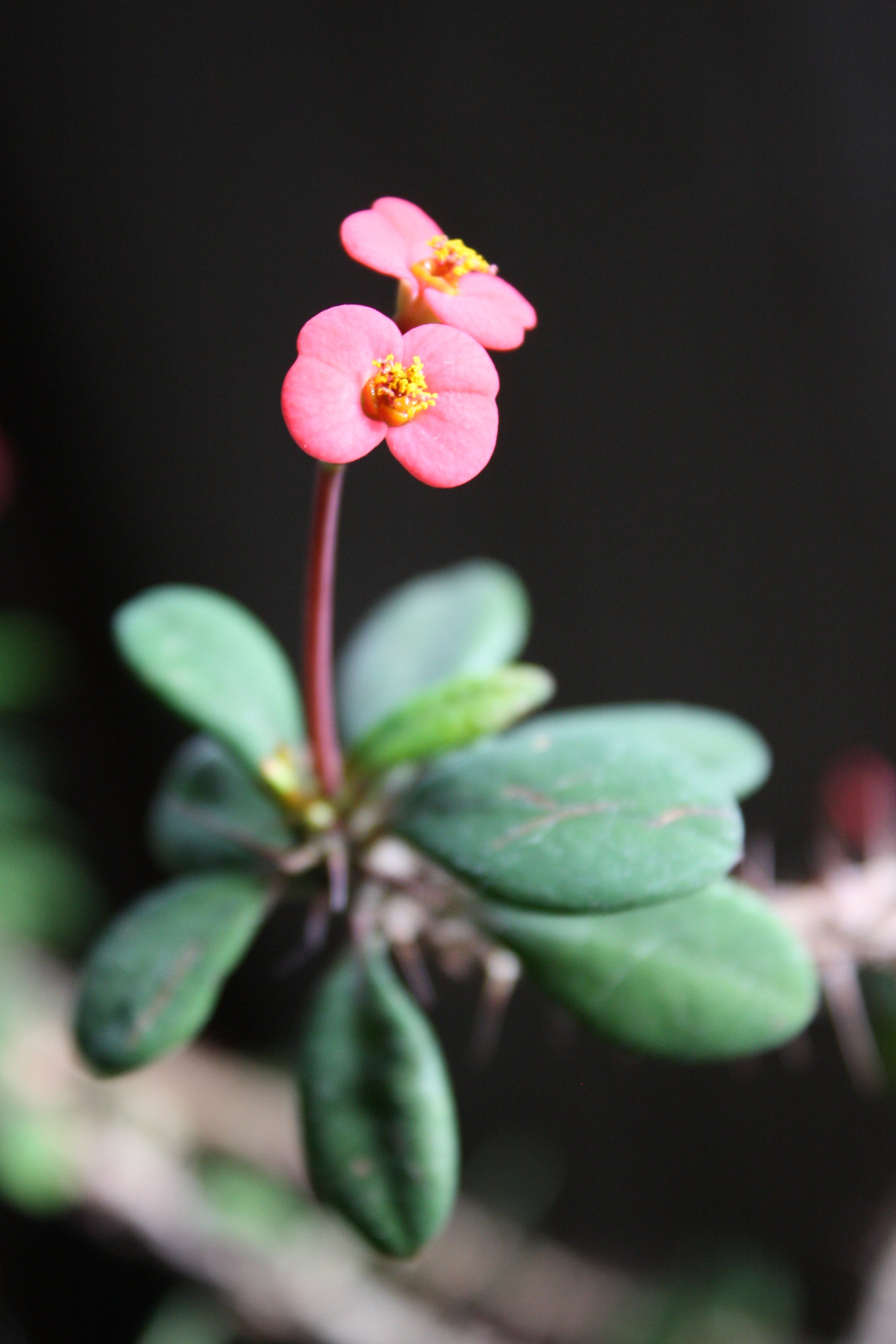
Pink Flowers on Crown of Thorns Euphorbia Milii Plant Picture Free Photograph Photos Public
Noted for its incredibly showy bracts, Euphorbia milii, commonly called Crown of Thorns, is a sprawling evergreen shrub with succulent branches lined with long, sharp, black thorns and sparsely leafed. The foliage of leathery, obovate, bright green leaves is produced only on new stem growth.
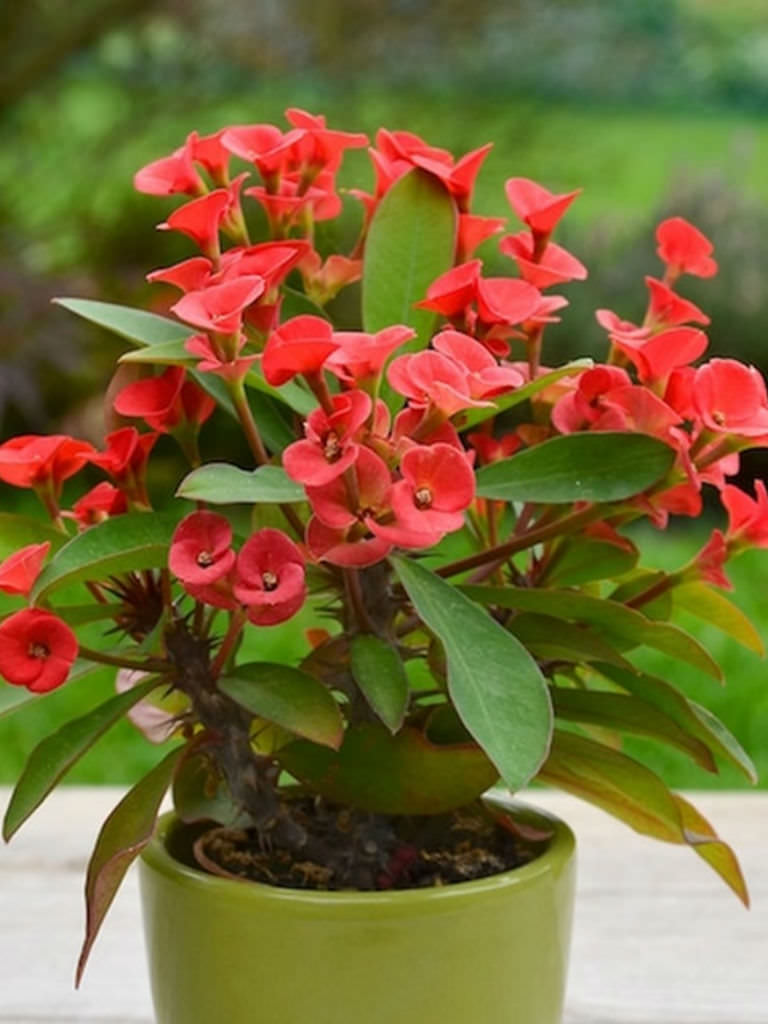
Euphorbia milii (Crown of Thorns) World of Flowering Plants
Euphorbia milii crown of thorns A more or less evergreen shrub to 1m, with thorny, succulent branches, leathery obovate leaves and axillary clusters of very small yellow flowers with showy, bright red bracts Other common names Christ plant Christ thorn Join the RHS today and save 25% Join now < > © RHS 1999 © Dorling Kindersley Ltd © RHS 1999

Euphorbia milii Yellow Flower Euphorbia milii, Euphorbia, Crown of thorns plant
Plant Profile Contents Family: Euphorbiaceae Botanical name: Euphorbia milii Origin: Madagascar Growth: succulent, leafy, with thorns, upright shrub-like, highly branched Height as indoor plant: 10 - 50 cm Leaves: small, green, oval, alternately arranged, depending on the species either evergreen or deciduous